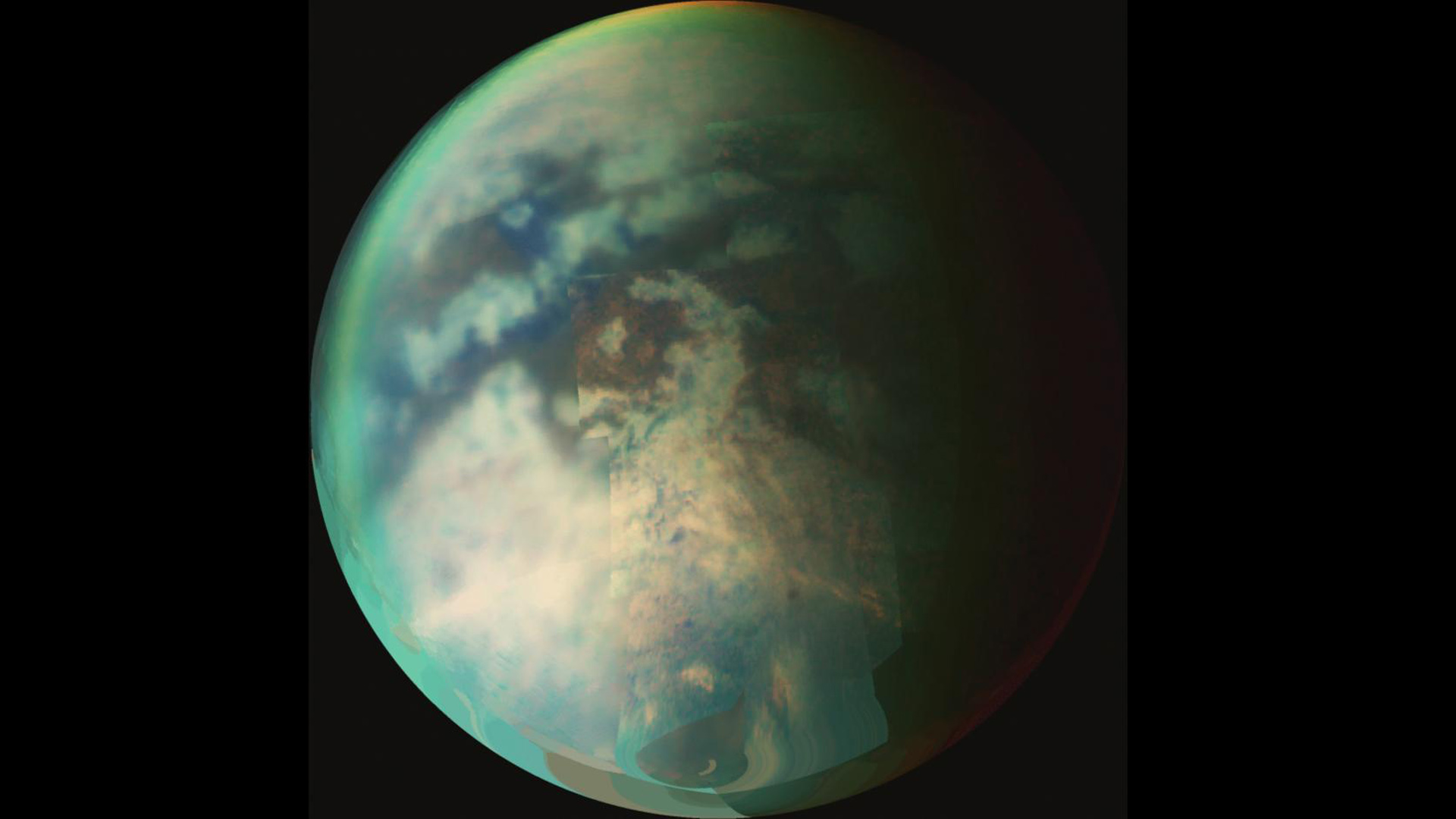The biggest moon of Saturn An intriguing planet with a vague resemblance to Earth is called Titan.
Cassini’s asteroid Titan is a peculiar planet. Titan is so cold that liquid methane and ethane seas and lakes develop on its surface. Titan is being studied in great detail by N.A.S.A’s Cassini mission and other spacecraft. The moon, however, also contains an ocean of liquid water that may contain life beneath its ice-hard water surface.

A group of scientists from the Catholic University of Louvain (UCLouvain) in Belgium are working to learn more about this underground ocean and specifically how it interacts with the ice shell that surrounds it. More specifically, they want to know how the weight of the icy shell and the depth of the ocean affect the creation of tidal motions and currents within the underground water body.
The scientists expanded on a wealth of earlier investigations into Titan’s subsurface water. SLIM (Second-generation Louvain-la-Neuve Ice-ocean Model), a cutting-edge numerical model that has been utilized in the past to investigate
Titan’s surface methane lakes and seas, the researchers examined both two- and three-dimensional aspects of the subsurface ocean using a simulated 60-mile-deep (100 kilometers) ocean to model the processes in the water body.

The researchers also examined what are known as gyres on Titan, large systems of rotating ocean currents that can also be found on Earth. Five main gyres swirl in Earth’s oceans. Titan, which is larger than the solar system’s smallest planet Mercury, only appears to harbor two.
While Earth’s ocean tides rise and fall due to the influence of our moon’s gravity, on other celestial bodies where liquid oceans are internal, such as on Titan, tidal motions are influenced by other forces. These primarily include the subsurface ocean’s depth and the presence of an outer ice shell that presses down on the internal ocean, creating tides and currents and the gyres that drive them. So, how does Titan’s ice shell affect the tidal motions of its subsurface ocean?
Robert Tyler, who is a research scientist at N.A.S.A’s Goddard Space Flight Center and an associate research scientist at the University of Maryland Baltimore County, and a co-author of the study, told Space.com in an email that what happens in the internal ocean depends on the stiffness of the ice crust and the viscosity of the ice that interacts with the ocean.

“The stiffness of the ice creates a new ice [and] ocean wave mode that can travel faster than the ocean waves without ice,” Tyler wrote. “It also creates dispersion (wave speeds vary with wavelength). [Then], the viscosity of the ice layer damps the waves.”
Essentially, both the varying stiffness and thickness of the ice shell manipulate the tidal motions and gyres on a global scale. Gyres are stationary, that is, they don’t move from one place to another, but remain consistently located in certain areas of the world’s ocean, driving water circulation. The two gyres on Titan simultaneously rotate around the moon’s poles.
The researchers used a combination of previous calculations and studies of high-latitude oceans on Earth, to create their models. The study, however, has its limitations, since scientists don’t know exactly how deep Titan’s subsurface ocean is.
David Vincent, a research assistant in environmental sciences at UCLouvain and the lead author of the study, told Space.com in an email that while the study involved the examination of how the ocean’s depth influences the ocean’s tidal motion, “no conclusion on the depth of the ocean can be drawn from my results.” Vincent referenced other ocean worlds in the solar system, including Saturn’s smaller moon Enceladus, and Jupiter’s Europa, noting that those oceans are about 62 miles (100 kilometers) deep, but that the “difference in depth and size can result in various phenomena taking place,” naming Enceladus’ geysers as an example.
Vincent and Tyler both mentioned N.A.S.A’s upcoming Dragonfly mission to Titan in terms of next steps for exploring the moon. Dragonfly, however, “will not focus on the subsurface ocean, although it will study the electric fields, which will give some insights on the ocean depth,” Vincent said. The Dragonfly mission is currently slated to launch in 2027 and arrive at Titan in 2034.
“Future studies should either use new analysis methods of Cassini’s data or use models,” Vincent added. “Regarding ocean modeling, the next step could consist in improving the modelisation of 3D phenomena related to temperature and ‘salinity’ and study their interaction with the tidal motion.”
The study is described in a paper(opens in new tab) published in December 2022 in the journal Icarus.
Soucre: www.space.com








